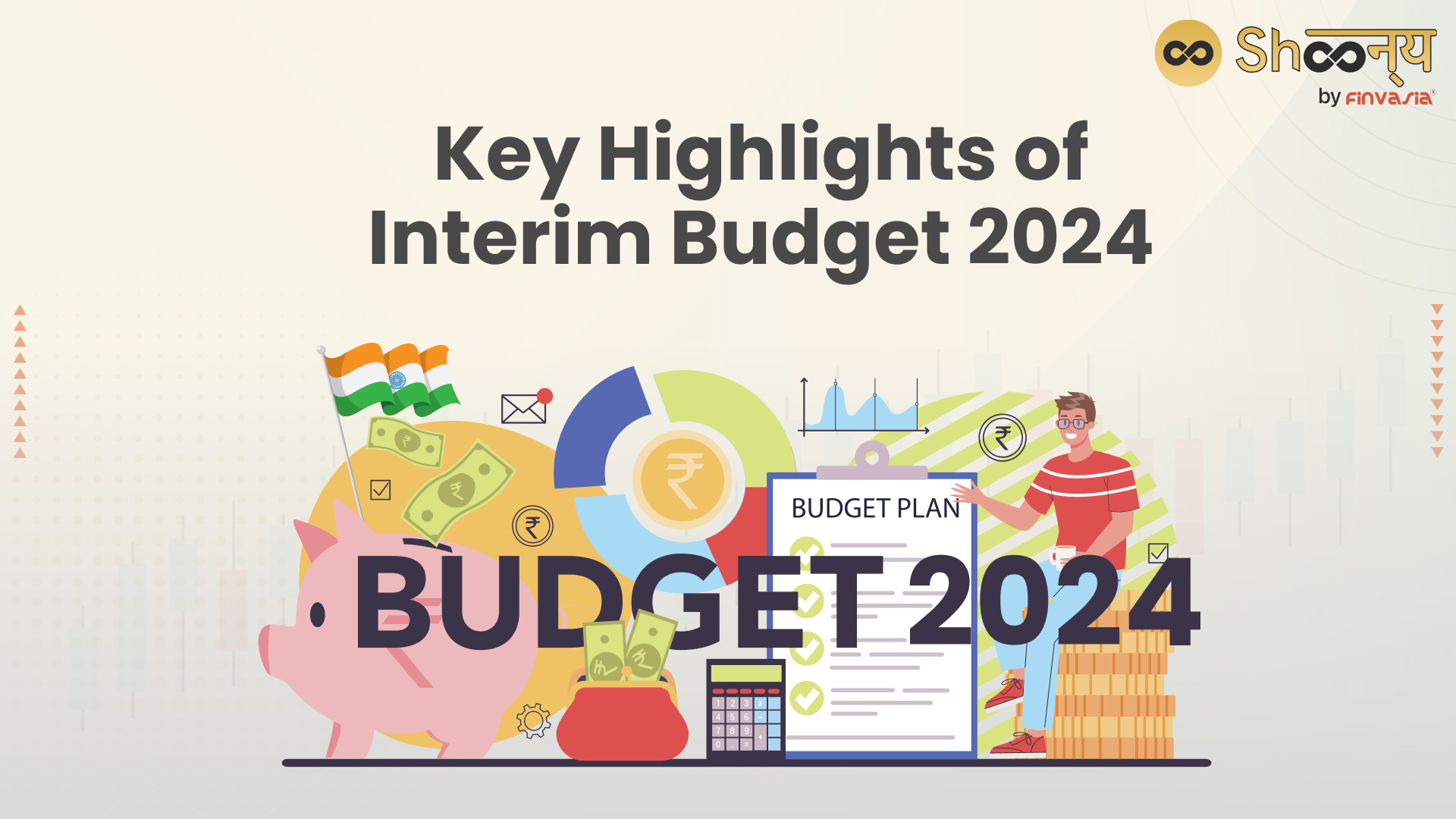Interim Budget 2024: A Comprehensive Overview

The Interim Union Budget for the financial year 2024-25 was recently presented in the Parliament by Finance Minister Nirmala Sitharaman. This marks the sixth budget under the current Finance Minister and the final one of Prime Minister Narendra Modi’s second term.
The interim budget 2024-25 is a temporary financial plan covering the government expenditures until the new government takes over.
Budget 2024 focuses on important areas like sustainable technology, supporting workers and small businesses, and improving infrastructure, healthcare, agriculture, renewable energy, and transportation.
What Changes Did Interim Budget Propose for Salaried Class?
The government has decided to maintain the existing direct and indirect taxation rates.
Income tax slabs remain unchanged, with Sitharaman stating that the current taxation policy will continue.
Under the old tax regime, no tax is imposed on annual income below Rs 2.5 lakh.
A 5 percent tax is levied on income between Rs 2.5 lakh and Rs 5 lakh, 20 percent on Rs 5-10 lakh, and 30 percent on those earning over Rs 30 lakh annually.
Know the difference between an old and a new tax regime, and which is better?
Budget 2024: Tech Sector Announcements
- Solar Panel Scheme: To promote solarisation, the Finance Minister revealed plans to provide up to 300 units of free electricity monthly to one crore households, echoing Prime Minister Narendra Modi’s commitment made during the Ayodhya Ram Mandir consecration on January 22.
- EVs: The government will expand the electric vehicle (EV) ecosystem by enhancing manufacturing and charging infrastructure support.
- Private Sector: A substantial corpus of Rs. 1 lakh Cr. will be allocated for long-term financing or refinancing, extending up to 50 years with negligible or no interest rates.
This initiative aims to catalyse research and innovation within the private sector by leveraging the potential of youth and technology.
Interim Budget 2024: Key Highlights
Here are the various announcements made in the budget 2024 to drive the nation towards its goal of becoming ‘Viksit Bharat’ by 2047.
Skill Development
Over 1.4 crore youth have been trained under the Skill India Mission.
Additionally, 43 crore loans have been sanctioned under PM Mudra Yojana.
The ‘Lakhpati Didi’ scheme will be expanded to empower rural women and enhance the rural economy.
What is the Lakhpati Didi scheme?
The Lakhpati Didi scheme is a government initiative aimed at providing skill training to two crore women nationwide. Initially launched in select states, the scheme now aims for a broader implementation nationwide.
Through this program, women receive training in a variety of practical skills tailored to meet the needs of emerging industries.
Affordable Housing
The Government plans to subsidise the construction of 30 million affordable houses in rural areas.
Healthcare Initiatives
Cervical cancer vaccination will be encouraged, and maternal and child health care schemes will be merged into a comprehensive program.
Additionally, the aim is to expand the Ayushman Bharat scheme to include all ASHA workers, Anganwadi workers, and helpers.
Agricultural Policies
The Government will promote the use of ‘Nano DAP’ for various crops and expand its application to all agro-climactic zones.
Policies to support dairy farmers and combat Foot and Mouth Disease.
Self-Reliance in Agriculture
A strategy will be formulated to achieve AtmaNirbharta (self-reliance) in oilseeds, covering research, procurement, value addition, and crop insurance.
Fisheries Development
A new department, Matsya Sampada, will be established to address the needs of fishermen.
Rail Transportation Upgrades
40,000 normal rail bogeys will be converted to Vande Bharat standards, focusing on enhancing safety and convenience for passengers. The Government will also prioritize metros to facilitate transit-oriented development.
Environment and Sustainability
The Government has announced several schemes to achieve Net Zero by 2070, including funding for offshore wind energy generation, procurement of biomass aggregation machinery, and expansion of the e-vehicle sector.
Infrastructure Investment
The government has increased the capital expenditure to ₹11.11 lakh crore for 2024-25 to boost the overall development.
Fiscal Management
Efforts will continue towards fiscal consolidation to reduce the fiscal deficit to 4.5% in 2025-26.
Budget 2024: Achievements
Here are certain government achievements discussed in the budget 2024:
Inflation Control and Economic Growth
Inflation has moderated and remains within the target band of 2%-6%. Economic growth has accelerated, leading to a 50% increase in people’s average real income.
Poverty Alleviation and Food Security
FM Sitharaman highlighted the Government’s achievement of pulling 25 crore people out of poverty in ten years.
Additionally, she mentioned that the government has provided free food for 80 crore people through various schemes.
Direct Benefit Transfers
The PM Jan Dhan Yojana accounts have facilitated Direct Benefit Transfers amounting to Rs. 34 lakh crore, resulting in savings of ₹2.7 lakh crore.
Support for Artisans and Street Vendors
The PM Vishwakarma Yojana offers comprehensive support to artisans, while credit assistance has been provided to 78 lakh street vendors under the PM-SVANidhi scheme.
Moreover, 30 crore Mudra Yojana loans have been disbursed to women entrepreneurs.
Stay tuned for the whole budget for 2024, which is speculated to be announced in July after the formation of the new government following the Lok Sabha elections in 2024.
Conclusion
The Interim budget 2024 outlines significant strides towards national development, emphasizing skill enhancement, regional growth, and environmental sustainability.
______________________________________________________________________________________
Disclaimer: Investments in the securities market are subject to market risks; read all the related documents carefully before investing.








